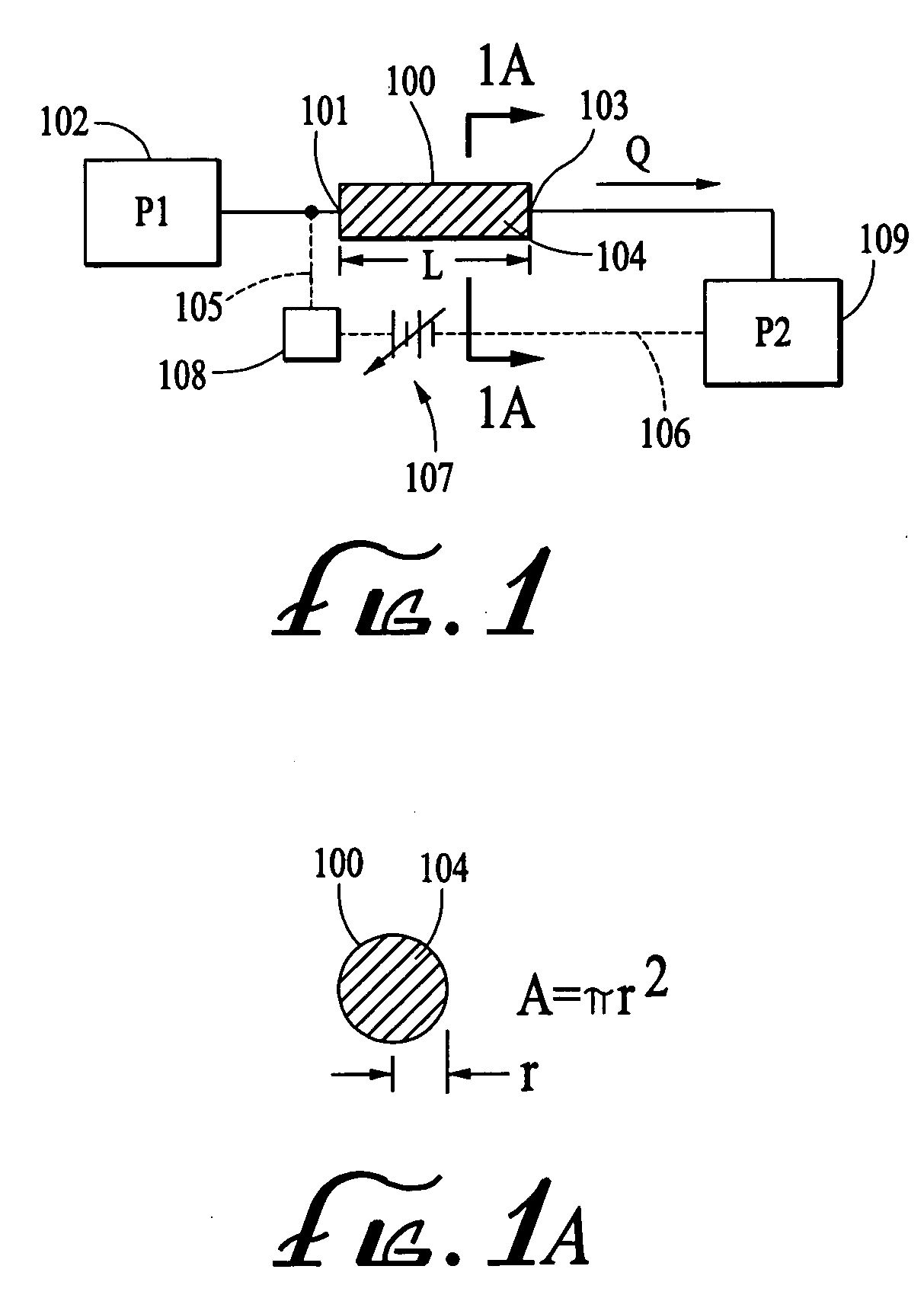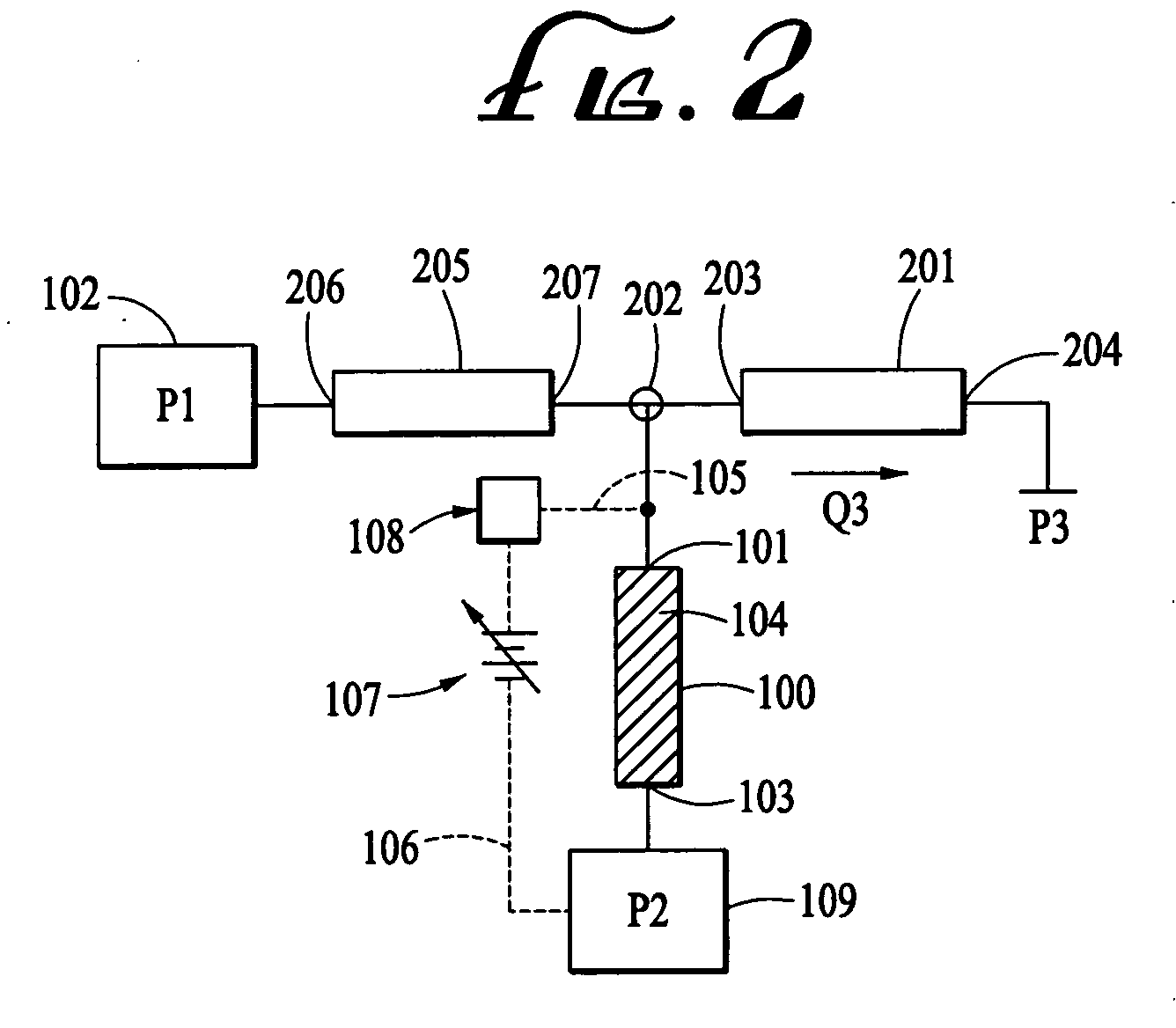Electroosmotic flow controller
a flow controller and electroosmosis technology, applied in the direction of diaphragms, ratio control, electrolysis, etc., can solve the problems of inability to maintain precise flow rates in the face of changing heads, introduce additional imprecision and dead space into flow-controlled devices, etc., to achieve rapid and accurate flow control
- Summary
- Abstract
- Description
- Claims
- Application Information
AI Technical Summary
Benefits of technology
Problems solved by technology
Method used
Image
Examples
Embodiment Construction
[0052] Electroosmotic flow in open channels and in porous media is a well-know phenomena and has been the subject of many experimental and theoretical studies. When a liquid (e.g. water) is in contact with a dielectric solid (e.g. glass, silica, many plastics and ceramics) the natural electrochemistry of the interaction produces a thin layer of net charge density in the fluid that is localized to the liquid-solid interface. An electrical field applied so as to produce a component tangential to this interface will produce a Lorentz force on this net charge density. This net force will cause a motion of the net charge and this motion will be imparted by viscous action to the remaining neutral fluid. Thus in a channel packed with a porous dielectric material that is filled or saturated by an appropriate liquid, a potential difference ΔV applied end-to-end will produce what is known as an electroosmotic flow of the liquid. This electroosmotic flow may compete with or even dominate the f...
PUM
| Property | Measurement | Unit |
|---|---|---|
| diameter | aaaaa | aaaaa |
| diameter | aaaaa | aaaaa |
| time | aaaaa | aaaaa |
Abstract
Description
Claims
Application Information
 Login to View More
Login to View More - R&D
- Intellectual Property
- Life Sciences
- Materials
- Tech Scout
- Unparalleled Data Quality
- Higher Quality Content
- 60% Fewer Hallucinations
Browse by: Latest US Patents, China's latest patents, Technical Efficacy Thesaurus, Application Domain, Technology Topic, Popular Technical Reports.
© 2025 PatSnap. All rights reserved.Legal|Privacy policy|Modern Slavery Act Transparency Statement|Sitemap|About US| Contact US: help@patsnap.com



